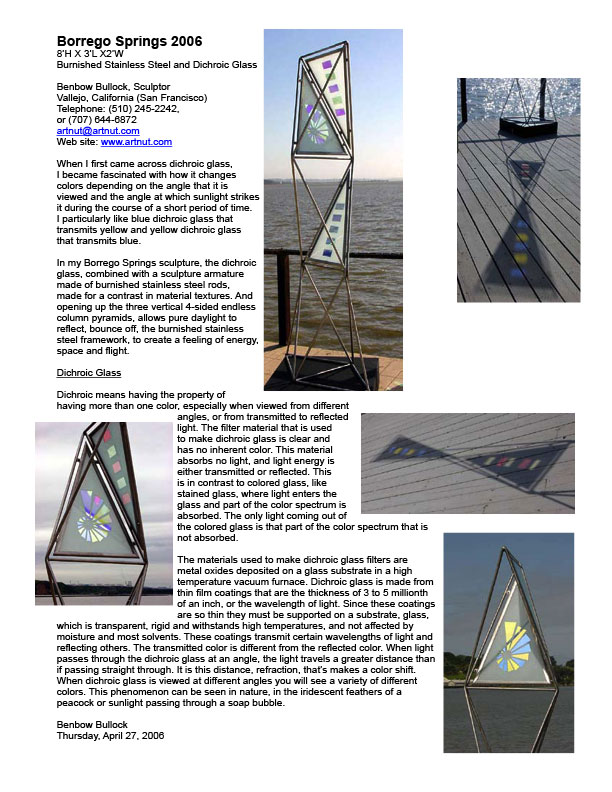
Aurora Aurora
2006
8'Hx3'x2',
Burnished Stainless Steel & Dichroic Glass
Night & Day
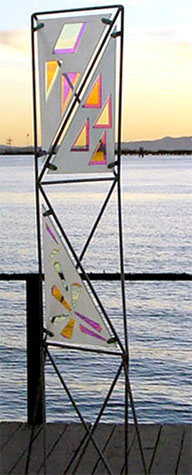


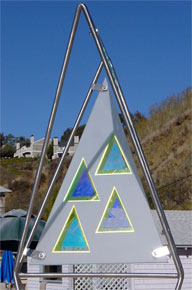
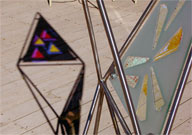
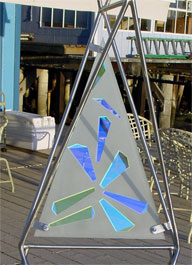
 |
||||||
|
Aurora Aurora Night & Day |
||||||
 |
||||||
 |
||||||
 |
 |
|||||
 |
||||||
 |
||||||
|
Copyright © Benbow Bullock, 2008
|
||||||
Brilliant Peacock Kinetic Glass Sculptures Explained
NASA developed dichroic glass for use in satellite mirrors. It is also used on windshields of spacecraft, aircraft and automobiles to deflect unwanted light and heat. It is an anti-reflecting coating used on eye glasses.
In nature, you can see the characteristics of dichroic glass thin-film coatings in the constantly changing iridescent bright colors of peacock feathers in the sun, oil slicks on water, soap bubbles, and on the wings of dragonflies flitting over a pond.
The brilliant optical properties of dichroic glass are produced by multiple micro-layers of metal oxides, three to five millionths of an inch, in thickness. The same as wavelengths of colors in the visible spectrum of light. Selected wavelengths of light can be transmitted, or reflected, causing an array of colors to be visible. Dichroic glass is very efficient, reflecting or transmitting over 95% of the light energy it receives. In contrast, stained glass absorbs all colors, except the selected color to be seen.
Dichroic glass sculptures are passive, kinetic, and interactive. Passive: There are no moving parts. Kinetic: Colors change and images change shapes, depending on the angle that light contacts the glass. Interactive: Changes depend on the apparent position of the sun, or motions of viewers. And they are silent…
Dichroic glass sculptures are beautiful and awesome!
Benbow Bullock, Sculptor
artnut@artnut.com